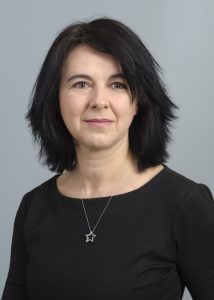 | Professor Harvard Medical School, Massachusetts General Hospital, Athinoula A. Martinos Center for Biomedical Imaging 13th Street, Building 149, Room 2279 Charlestown, MA 02129 (617) 726-4024 mari at nmr.mgh.harvard.edu |
I am a Professor at Harvard Medical School with specific training and expertise in the development of non-invasive optical techniques and applications in neuroscience, neurology, and brain health. From the beginning of my career, my research has been devoted to near-infrared technology development and its clinical application. Working on the development of cutting edge methods to monitor human physiology, on their dissemination to the scientific community and the clinical translation has given me the opportunity to grow a very productive and successful multi-disciplinary career and to make impactful contributions.
My background is in physics, with specific training in optics acquired at the University of Florence in Arcetri, the final residence of Galileo Galilei.
I started working on near-infrared spectroscopy (NIRS) in 1993 as a postdoctoral fellow in Dr. Enrico Gratton’s laboratory at the University of Illinois at Urbana-Champaign. In the nineties, NIRS was just emerging, and as a pioneer in the field I contributed to the development of the theory and the technology of the new modality. My experimental contributions ranged from validation studies in phantoms, in animal models, and in a range of human’s applications. In Illinois, I had the opportunity to work with a company, ISS Inc., and contribute to the development of the first commercial frequency-domain (FD) NIRS device.
In 1999, I started my own laboratory at Tufts University and worked there for three years as a Research Assistant Professor. There I published the first real-time movie of brain activity using fNIRS.
One years later I had the opportunity to move to the Martinos Center at MGH, where I could focus on NIRS applications in the brain and use cutting-edge technology to design and perform multimodal studies applying fNIRS in conjunction with fMRI, MEG, and EEG. At MGH, I contributed to the development of a widely used continuous-wave (CW) NIRS device for functional imaging commercially disseminated by TechEn Inc., and to the creation of Homer, a software package used worldwide to analyze fNIRS data.
In parallel to my efforts in fNIRS, I continued to work on the development of NIRS methods for the assessment of infants’ brain health. These methods include diffuse correlation spectroscopy (DCS), which adds the measure of blood flow and oxygen metabolism to the FDNIRS oxygenation measures. By developing a simple quantitative spot measurement approach at the bedside, with FDNIRS and DCS I have generated a series of seminal papers on normal and abnormal development of infants’ brains. Based on these successful results, I developed the first commercial fully integrated FDNIRS-DCS system (MetaOx, ISS).
In the past few years I have been working to extend the use of NIRS and DCS technologies for neuromonitoring applications in older children and adults (see current projects).
